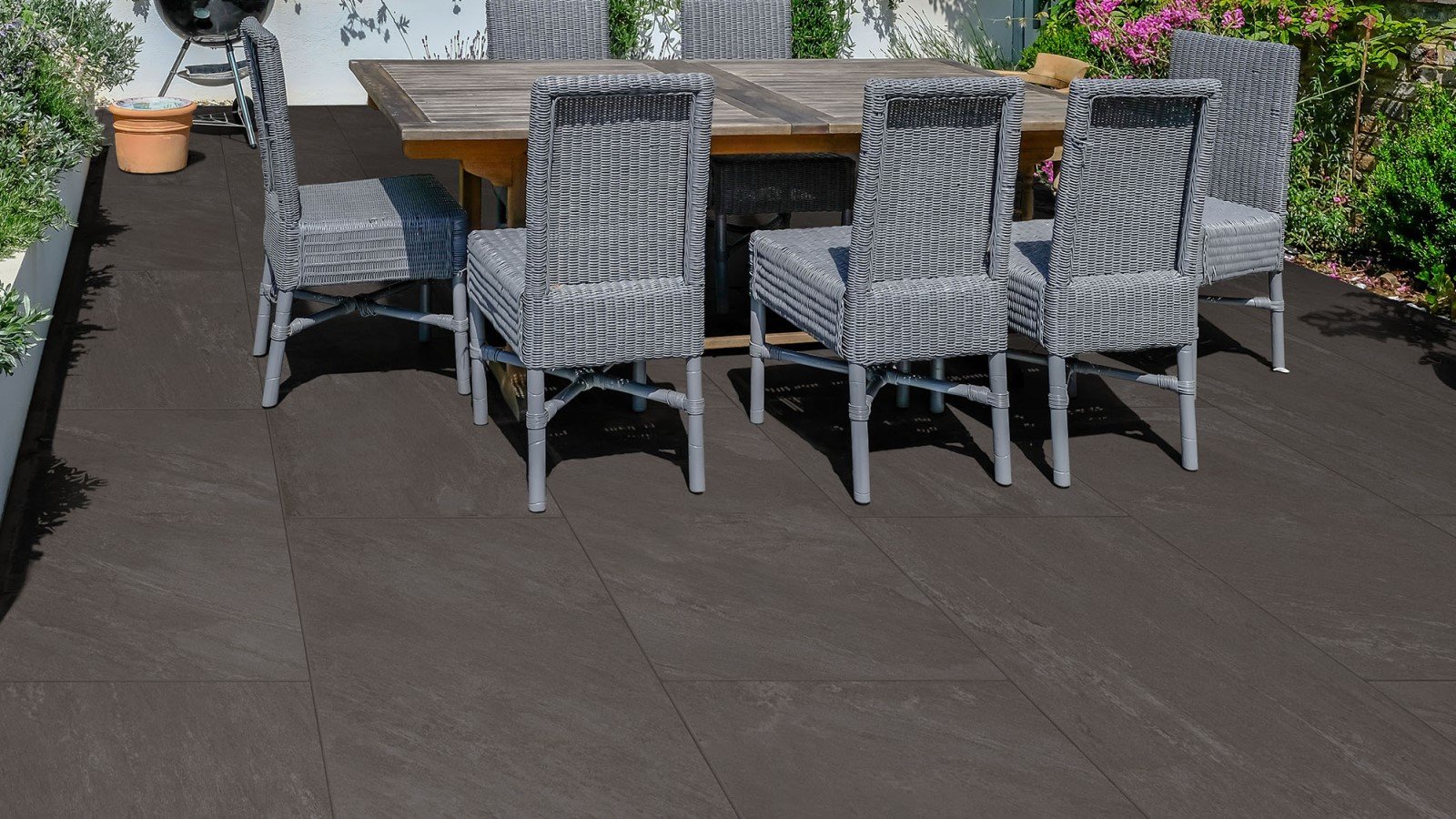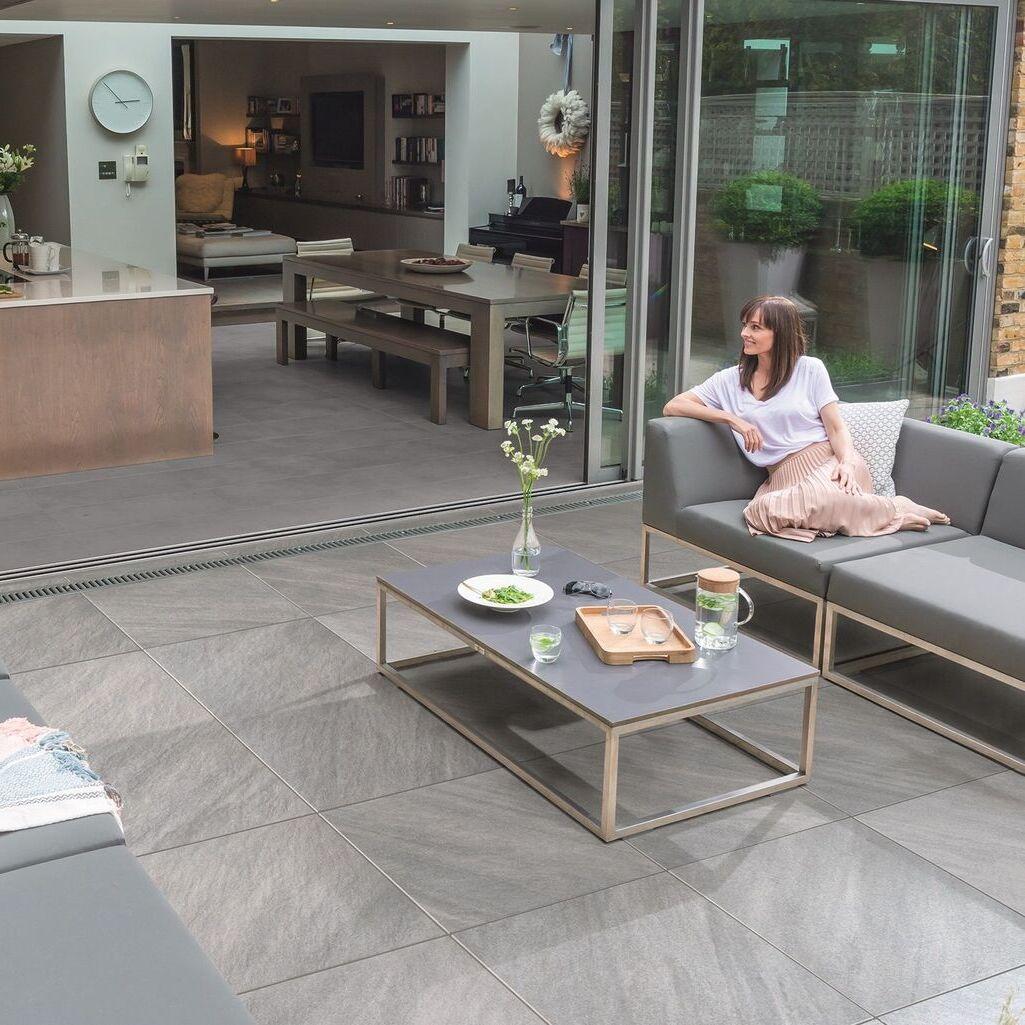How to Maintain Your Patio
With spring in full swing, it’s time to get your garden back to its pristine best – and we aren’t just talking about the plants and flowers that survived the winter frost.
Your patio also needs a generous helping of TLC to prepare for the family barbecues and summer parties in the glorious British sunshine. That’s why we’ve pulled together this patio cleaning guide to help you care for your outdoor space.
From how to clean a patio to sealing a patio, continue reading, below, to get your pavers summer-ready.
Cleaning your patio
Most paving types need little more than a bucket of warm soapy water to maintain their pristine sheen. However, there are certain pavers that need a little extra care come cleaning day.
See below for our guide on how to clean natural stone, concrete and porcelain paving slabs.
- Sweep away the day-to-day dirt that builds up on your patio over a few months.
- Scrub the pavers with warm soapy water. If you have natural stone paving, you may notice some slight discolouration after cleaning, but don’t panic; this is perfectly normal and a characteristic of natural stone.
- If the sweep and scrub solution isn’t cutting it, then consider a specialised patio cleaner to tackle those tougher stains. However, we highly recommend you check the suitability of the product for use with your patio, as an overly acidic patio cleaner can cause irreversible damage to certain types of pavers, such as limestone paving.
- If you have concrete paving, do not take a shortcut with a pressure washer to clean your patio. It may save time, but this method is too aggressive and can damage the surface and performance of your pavers.
- Regardless of your methodology, we recommend you thoroughly wash your patio three to four times a year, rather than just at the beginning and end of the summer season.
TOP TIP: Be careful with which type of weedkiller you use as some can stain your pavers. Ensure the weedkiller has been specifically developed for use with paving and, as always, follow the manufacturer’s instructions and test on inconspicuous areas first.
Repairing your patio
Sometimes, with the wear and tear of time, patio slabs can crack, break or come loose from its rigid formation. But you don’t need the expensive services of a professional to restore your paving to its former glory - just take a look at our guides, below.
How to fix broken and cracked slabs
No amount of paver patio maintenance can fix the unsightly blemishes of a cracked or broken slab. The only solution is to replace the affected pavers entirely.
- Start by removing the broken paver from the patio (with a hammer and chisel, if necessary) and then chip away the remnants of any old mortar on the bed.
- Mix new mortar, apply a layer onto the bed and carefully lay your replacement paving slab into place.
For a more detailed explanation on removing and replacing pavers, read our how to fix loose paving slabs guide.
How to point or repoint your patio
Patio slabs need pointing (or repointing) when they come loose from your patio, typically when the jointing compound has degraded over time.
- First off, remove any residue of the previous jointing compound around the affected paver – which is best achieved with a hammer and bolster chisel.
- Then, you’ll need to refill those gaps with fresh jointing, such as our Jointing Compound.
- Alternatively, you can use a strong semi-dry mortar mix, with 4 parts building sand to 1 part cement. Just ensure that, when mixing, there is sufficient water to bond but not so much to stain the paving when applied.
TOP TIP: As it dries quickly, make sure you use your pointing mortar within 30-45 minutes of being mixed.
Sealing your patio
So, you’ve cleaned your patio, repaired any cracked slabs and checked the condition of the joints – what’s next on your to-do list?
Well, if you’ve laid porous slabs or stones, say you’ve installed our Bradstone Smooth Natural Sandstone Pavers, then you’ll need an Indian stone sealer. Whatever the type of paving, a good quality sealant helps protect your patio from dirt, oil and water-based staining, and even prevents the growth of moss and algae.
Continue reading, below, find out more about sealing patios.
When should I apply paver sealer?
For freshly laid patios, you may want to hold off on applying sealant for a short period. That’s because, if you seal too soon, you could trap unsightly efflorescence on your pavers.
Simply put, efflorescence is a normal chemical reaction that either causes white patches to appear or bleaches your pavers. Don’t worry, this will naturally disappear over time but, until then, we recommend postponing sealing your patio.
How long does paver sealer last?
The general rule of thumb is that paver sealers last between 3 to 5 years, depending on how often you clean the patio, as well as other factors, such as sun exposure, rain and foot traffic.
However, you need to bear in mind that, once you’ve completed sealing the patio, it cannot be removed. As such, you need to be 100% certain that you definitely do want to add paver sealer and what you want to achieve by doing so.
Do porcelain pavers need sealing?
Where concrete paving needs concrete patio sealer and natural stone needs Indian stone sealer, porcelain pavers do not require any sealant at all. That’s because porcelain is non-porous, meaning water-based stains pose no problem to these practical pavers.
What’s more, porcelain paving is incredibly hard-wearing and scratch-resistant, making it the ultimate low maintenance patio solution.
If you have any questions or want to find out more about the best ways to maintain your patio, give our friendly customer service team a call on 0800 032 6306 or start a live chat.



















































